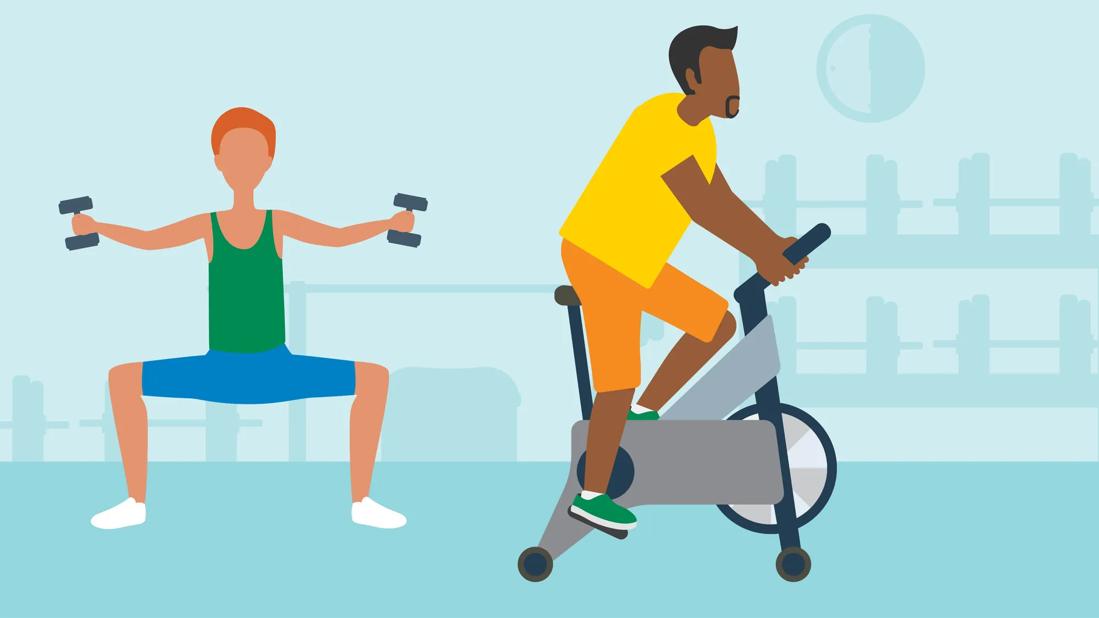Low-intensity interval training, or LIIT, offers numerous benefits and less wear and tear

No pain, no gain. Push yourself. Go all out.
Advertisement
Cleveland Clinic is a non-profit academic medical center. Advertising on our site helps support our mission. We do not endorse non-Cleveland Clinic products or services. Policy
That’s the mentality that drives a lot of sweat-soaked workouts. But here’s a little secret: Exercise DOESN’T have to be a grueling survival test.
Low-intensity interval training — or LIIT — is a workout approach that dials down effort levels while still delivering fitness gains.
How can you do it? Let’s find out from exercise physiologist Ben Kuharik.
The idea behind LIIT is to exercise for longer periods at a low to moderate-intensity level with built-in recovery breaks. You’ll exert yourself … but you won’t exert yourself too much.
During a LIIT workout:
“LIIT requires lower energy demands than most workouts,” says Kuharik. “The point is to challenge yourself a little bit with an effort level that you can sustain.”
LIIT is the gentler cousin of HIIT, or high-intensity interval training. HIIT has gained popularity over the years for its higher-energy and more challenging periods of exercise. It’s designed to push you to your limits.
Advertisement
You can do the same types of exercises in both LIIT and HIIT workout programs. The difference is in your exertion level. “HIIT is done at maximum intensity,” explains Kuharik.
Expect to get out of breath and for your heart rate to hit zone 4 or zone 5 while approaching your max exercise rate during a HIIT workout. Given the high physical demands, HIIT sessions are shorter than LIIT sessions.
HIIT and LIIT can both improve key fitness factors — just in different ways. HIIT typically offers more when it comes to building muscle and strength. LIIT, on the other hand, may burn more calories given the longer duration of the workouts.
Ultimately, your goals and lifestyle will determine which choice is best for you.
“HIIT is best for higher-level athletes on a consistent workout program,” says Kuharik. “When you go very hard at the gym, it can put a toll on your body and a lot of stress on your heart. That’s not for everyone.”
And even if you do HIIT workouts, you may benefit from occasional LIIT sessions to help your body recover.
Pretty much any exercise activity can be turned into a LIIT workout. It’s just a matter of adjusting your exertion level and breaking the session into intervals of activity and rest. For example:
Turning down the intensity on exercise doesn’t turn off the advantages, emphasizes Kuharik. Here are seven benefits of LIIT.
Advertisement
So, is LIIT right for you? It’s hard to find many flaws in a fitness plan that’s easier on your body: “One of the most important things for your health is staying active, and low-intensity training can help you do that,” emphasizes Kuharik.
Advertisement
Learn more about our editorial process.
Advertisement

You can improve your athletic performance over time by breaking up your workout regimen into focused cycles

Lower-intensity workouts can deliver high-quality health and fitness results

Incremental changes in your exercise routine can improve your strength and endurance over time

Understanding heart rate zones can help you tailor your workout to reach your goals

Increase the size of your muscles by bulking up on protein and focusing on slow, intense movements with progressive overloading

Low-impact exercises help you recover faster between sets, during cool downs and on rest days

Eccentric is slow and steady, while concentric is fast and controlled

Weightlifting can help you build muscle mass, reduce joint pain and increase flexibility to improve your quality of life

Start having sex about 72 hours before ovulation, then at least every other day during your fertile window

Attachment theory suggests that your earliest relationships shape connections throughout your life

It isn’t a recognized mental health disorder, but research shows that problematic social media use can negatively affect your mental health, self-esteem and sleep